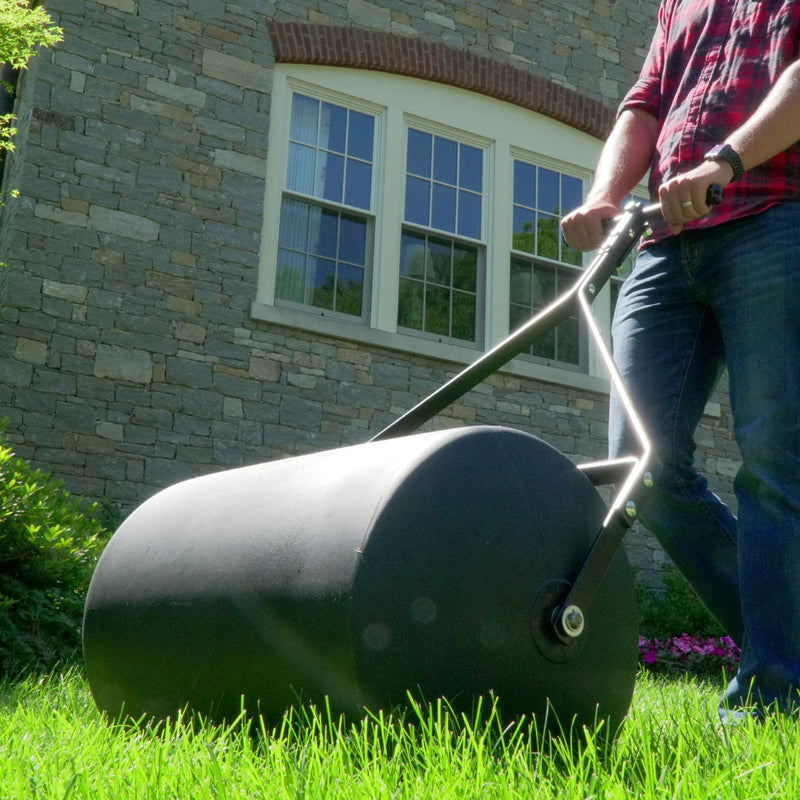
Our climate is changing, with high summer temperatures and low rainfall in different parts of the country, sparking larger wildfires than in the past.
You may live in an area drier than normal in the summer or in a desert climate where grass lawns don’t survive.
In this blog post, you’ll learn more about
· A thirsty lawn comes at a steep price
· What is a low-water lawn?
· Lawn and garden equipment you’ll need for a low-water lawn.
A Thirsty Lawn Comes at a Steep Price
Did you know 50% of the water you use outdoors is lost to wind, evaporation, and runoff due to inefficient watering methods? And if your lawn has an automatic sprinkler system, it can waste up to 25,000 gallons of water per year if it’s not well-maintained.
Whether you have your well or pay your local municipality for water, you’re still wasting a precious resource that seems to dwindle as the summer marches on.
Lawns require a lot of water to survive, especially in the middle of the summer when it’s hot and dry.
The EPA says, "If the average-sized lawn in the United States is watered 20 minutes every day for seven days, it’s like running the shower constantly for four days or taking 800 showers.”
And your turf doesn’t need that much water. Ideally, you should irrigate your lawn with 1-2” of water per week for healthy grass.
If you’re watering your lawn every day because it’s hot outside, you’re not only wasting water but also causing your grass to have shallow roots and be susceptible to fungal diseases.
While you may not be overwatering your lawn, you may be tired of all the maintenance required for healthy grass. You want options that don’t need constant care or as much water per week.
Introducing low-water lawns.
Read more: Conserve Water in Your Lawn!
What Is a Low-Water Lawn?
A low-water lawn is just that—a lawn that doesn’t need a lot of water.
You have nine choices for transforming your lawn into a low-water one:
1. Change your turf from a thirsty one to one that hardly needs water. For example, cool season tall fescue only needs ¾” water per week. Consider also wheatgrass for cool season lawns that uses hardly any water or fertilizer.
For warm season lawns, change your lawn grass to drought-tolerant turf, such as buffalograss that needs only ¼” water per week.
Of course, you don’t need to pull out your cool or warm season grasses if they’re planted in the right place and you’re limiting your water to only what they need, which is infrequent, deep watering.
2. Plant a clover lawn. Did you know growing clover in your lawn was normal before the 1950s?
Lawn pesticides came on the market post WW2 and killed clover as well as other “weeds.” Now, clover is making a comeback. This blog post shows you how to add clover to your lawn.
3. Plant a moss lawn. When you switch to moss, you won’t need to mow your grass anymore because it hugs the ground. Also, moss prefers shade. You can have a dense moss lawn that you don’t need to work on every weekend.
4. Opt for groundcovers that cover large sections of your yard. Groundcovers work well in sloped areas and under trees since their roots continually grow and fill empty spaces.
5. Go for artificial grass that looks identical to real grass. While you may want to hire someone to install fake grass, you’ll never have to mow, fertilize, or add weed control again.
6. Plant sedge grasses. Sedge grasses have rhizome roots that help cover your lawn. Sedges work well in wet or dry soils, and you have more than 2,000 varieties to choose from for your lawn.
7. Install sedum for grass. Sedum, also called stonecrop, is sturdy and grows low to the ground. It stores water in its leaves, making sedum drought-tolerant. Sedum also works well in dry, rocky soils.
8. Try your hand at carpetgrass, also known as blanket grass. This grass is a creeping perennial that looks like lawn grass when mowed often. However, blanket grass takes a few seasons to fully cover your lawn area because it’s a slow grower.
9. Opt for xeriscaping. This landscaping technique is popular in desert landscapes but also works well in other regions. You don’t have to completely turn your lawn into a xeriscaped one. Instead, turn a grassy area in full sun into a xeriscaped bed.
Xeriscaping uses gravel and drought-loving plants to create a low-maintenance, but still beautiful landscape. Use cacti, succulents, native flowers, junipers, sagebrush, and other plants that thrive with hardly any irrigation.
Learn more: Summer DIY Lawn Care
Lawn and Garden Equipment You’ll Need for a Low-Water Lawn
You can find the perfect lawn care and garden equipment to overhaul your thirsty lawn for a low-water one. You can easily remove your existing lawn using our ground-engaging garden equipment:
· Sleeve Hitch Disc Harrow
· Sleeve Hitch Box Scraper
· Sleeve Hitch Moldboard
· Sleeve Hitch Rear Blade
· Front-Mount Blade for RYOBI Electric ZTRs.
Of course, our lawn care attachments assist you with your other landscaping and turf needs.
Jumpstart Your Low-Water Lawn with Brinly’s Attachments
Transform your thirsty lawn with a low-water one using our garden and lawn care attachments to get the job done.
You can buy your next Brinly Lawn and Garden Equipment at these fine retailers.
Contact our customer service today if you need help with your new Brinly attachment!
Sources:
EPA.gov, Statistics and Facts: Why Save Water?
TheSpruce.com, 10 Best Types of Drought-Tolerant Lawn Grass.
Ibid., 10 Lawn Alternatives to Try In for a Low-Maintenance Outdoor Space.
